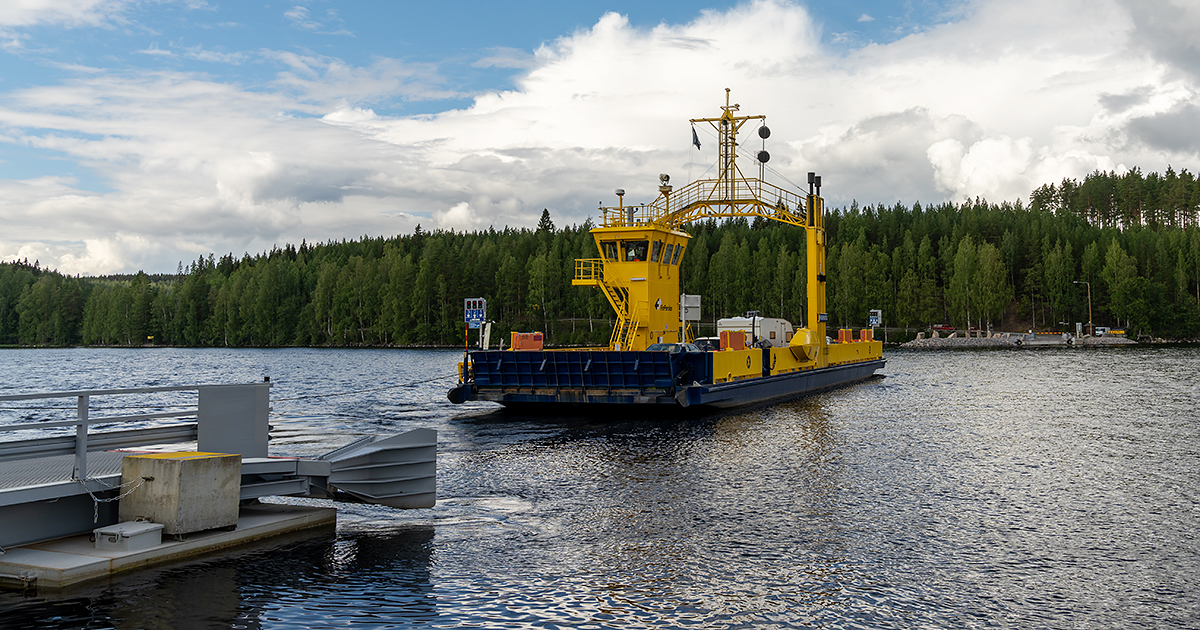Comments requested on authorising the Transport and Communications Agency to issue orders regarding virtual cables on cable ferries

A legislative amendment is proposed that would allow cable ferries to be increasingly controlled by means of a virtual guiding cable instead of a physical cable. The Ministry of Transport and Communications requests comments on the matter by 24 November 2021.
As the size of cable ferries has increased over the decades, the physical guiding cable has lost its importance as the system steering the cable ferry. Cables currently provide visual assistance to the ferry operator. Existing cable ferries are already technically equipped to use a so-called virtual cable instead of the conventional physical cable. It shows the location of the ferry in relation to the centre line of the ferry lane, and provides visual assistance and audio signals to help the operator to keep the ferry in the lane.
The Government proposes that the Act on the Transport System and Highways, which also contains provisions on ferries, be amended. The amendment would involve authorising the Finnish Transport and Communications Agency to issue orders. The objective is to have the Finnish Transport and Communications Agency Traficom specify the key technical requirements in terms of traffic safety for the conventional guiding cable and the virtual cable replacing it.
Virtual cable improves safety
A virtual cable increases the safety of cable ferry traffic. Unlike the physical cable, a virtual cable may be used throughout the year, also in ice conditions and while the cable ferry, the ferry lane or the banks are under repair. It is also more economical to operate the ferry without a physical cable. A virtual cable would have a lesser impact on the seabed under the ferry lane than a metal cable that stirs up the bottom sediment and removes nutrients.
The Bergö ferry in the Kvarken in the Gulf of Bothnia and the Arvinsalmi ferry in Liperi already use a virtual cable. The system was developed for the Bergö ferry lane where the cable repeatedly got stuck on rocks on the seafloor sections and broke. The Finnish highway network has a total of 33 cable ferries, most of them located in the archipelago of Southwest Finland and the lake areas of Eastern Finland. A total of 1.4-1.5 million ferry crossings are made every year, amounting to 750,000-800,000 kilometres annually.
According to the National Transport System Plan, or the Transport 12 Plan, the state develops the economic efficiency of the ferry fleet, reduces emissions, assesses, and implements legislative changes arising from technological development.
What next?
The deadline for comments is 24 November 2021. Organisations and private individuals are invited to comment online at www.lausuntopalvelu.fi or by email to [email protected].
The Act amending section 6 of the Act on the Transport System and Highways is due to come into force on 28 February 2022.
Inquiries:
Eeva Ovaska, Senior Specialist, tel. +358 295 342 113, eeva.ovaska(at)gov.fi
Gateway to Information on Government Projects: Government proposal for an Act amending the Act on the Transport System and Highways concerning the replacement of a physical guiding cable with a digital cable (LVM069:00/2021)
Gateway to Information on Government Projects: National Transport System Plan (LVM018:00/2019) (in Finnish)



